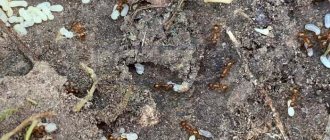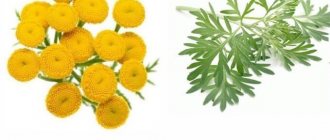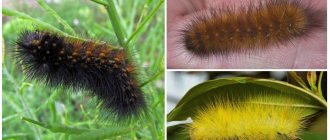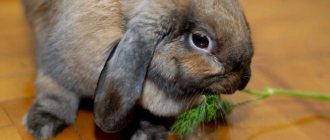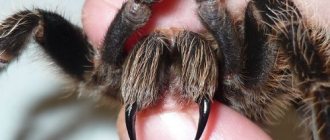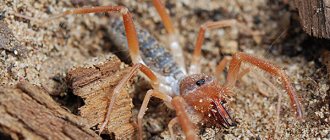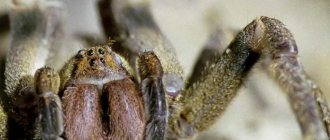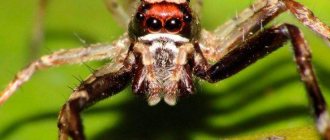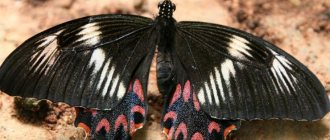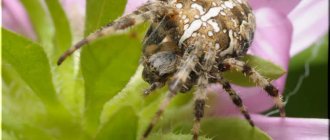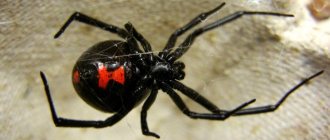Cilantro, mint and chili pepper are perhaps the main summer seasonings; without them it is difficult to imagine Georgian cuisine, Mexican cuisine, drinks and desserts... But many people find cilantro greens soapy, and chili peppers too spicy. How to neutralize the spiciness of pepper if you overdo it with the sauce, and is it harmful to burn your tongue? Why does menthol make your mouth feel cold and what transformations do these familiar seasonings undergo in our mouth?
What plants does parsley resemble?
The most common herbs similar to parsley are cilantro, celery, and lovage. But this list can be continued.
Cilantro
Most often, cilantro is confused with the described spice. They say about it that this herb is almost like parsley with the smell that a bug emits. Cilantro is often used in Caucasian cuisine, but not everyone likes it. Most often, confusion between herbs is discovered when the herb has already been added to a dish, and it has a specific, unpleasant aftertaste for some people.
Cilantro
Celery
In appearance, celery is very similar to the universal and well-known spice. True, the similarity is limited solely to the foliage. If you look at the root of the plant, it will not be thin and long, like parsley, but thick and round, large and beet-like. And the taste of celery is a little bitter (especially if there is insufficient watering during the growing season).
Celery
Creeping buttercup
The appearance of creeping buttercup resembles parsley in many ways. But it cannot be called a complete external double of culture. This weed flower is found in many areas in many regions of our country. Unlike parsley, buttercup has tendrils, and pulling it out of the ground will require a lot of effort. This herb should be handled with great care. Replacing parsley with it in a salad can be fraught with health problems - this weed is poisonous in large quantities. This plant is not used in food in principle - it is more often used in folk medicine as an external remedy.
Creeping buttercup
Common chervil
Common chervil is an annual plant, with a height of 30 to 60 cm. It has triangular, pinnately dissected leaves and a rhizome similar to a carrot (only white). Externally, the herb is not very similar to parsley, but it is quite possible to call the plant similar to this crop, because their taste is almost identical, and it will be unrealistic to notice the difference in the finished dish.
Common chervil
Veh poisonous
A rather dangerous weed, similar in appearance to parsley, is a poisonous weed. It grows not only in Europe, but also in Asia and America. The plant may also be popularly called cat parsley or water hemlock. The plant has a rather pleasant smell, but 100 grams of grass will be enough to kill a cow using this wild crop. Fortunately, poisonous weed is not very common in Russia, and gardeners have virtually no risk of confusing it with common garden greens.
Veh poisonous
Kokorysh
Another dangerous double of parsley is called corysh. Essentially, these are flowers with leaves like parsley. The color of the inflorescence is white. Grass grows in gardens, on roadsides and in fields. It can also be called dog parsley.
Kokorysh
Coriander
Coriander is very similar to the popular herb. It can turn green in the same way as parsley, but its leaves are much softer and more delicate. It is by touch that the plant is easiest to distinguish from its botanical twin.
Coriander
Properties of cognac
Cognac has certain beneficial properties. But in order for them to express themselves, you cannot drink it in glasses. Maximum – half a serving at a time.
As a medicine. Cognac can treat a sore throat. To do this, you need to dissolve honey in it and add lemon. We drink slowly so that the throat has time to completely moisten. Lemon will disinfect the throat, honey will soften it, and cognac will warm it.
Another use of this noble drink as a medicine is its positive effect on blood pressure. When consuming small portions it stabilizes. As a pleasant bonus, you can get rid of dizziness and headaches.
As a preventive measure, we add tea to the hero of our article. Perfectly helps in the cold season as protection against colds.
A remedy for insomnia. Drink a little before bed and the process of falling asleep will be much faster and easier.
What does a stink bug look like?
The stink bug, or black-whiskered stink bug, as well as the forest bug (lat. Carpocoris purpureipennis) is a species of bugs widespread throughout Eurasia. They live in garden plots, meadows, forests and roadsides.
The beetle has a body up to 2 cm long. Shades of color can be very different: from green to gray and reddish-brown. But the most common is the marbled beetle, which we see in our areas. You can see what the insect looks like in the photo. Thanks to this appearance, it easily blends with plants and the environment.
The body shape resembles a pentagon with protrusions on the sides. The insect has a hard shell, under which there are wings.
Where does the bad smell come from?
Special glands located on the stomach, head and back of the body are responsible for the unpleasant odor. The secretion contains cymic acid, which is unpleasant to humans. It is believed that this is how they protect themselves from predators.
Some types of insects are capable of spraying their “stench” over several centimeters. The smell can persist for several hours, which is extremely unpleasant.
The bug releases secretions from the glands for specific reasons:
- scare away enemies and warn of danger;
- attract females for mating and drive away male competitors;
- promote food search;
- help to navigate in space.
Life cycle
The life cycle of the stink bug includes mating, reproduction, feeding from spring to late autumn. In winter, the insect goes into suspended animation. Mating season begins in spring.
In the photo there is a stink bug laying eggs
The female breeds her offspring on the inside of the leaves. She can lay up to 40 eggs at one time. After 2 weeks, larvae appear that resemble adults. The offspring begins to actively feed, destroying plants. While growing up, they go through 5 molts.
How long does the black-whiskered stink bug live?
Average life expectancy is 1-1.5 years. The timing of the development of an individual from egg to adulthood largely depends on environmental conditions. If they are favorable, within a month an adult bug will grow from the egg. Sometimes this period lasts up to 2-3 months.
What does the forest bug eat?
The beetle has a piercing-sucking mouthparts. With its sharp proboscis it pierces the plants and sucks the juice out of them. The smell is not the only feature due to which humanity shows hostility towards this type of insect. The stink bug causes a lot of damage to agricultural lands and summer cottages. The secret lies in the feeding characteristics of the pest.
In the photo, the shield bug is eating raspberries
The bug loves young shoots and plants with soft stems. He puts his proboscis into them and sucks out the juice, which is why the culture dies. The insect especially loves raspberries. So if you notice a shield bug on your property, it’s time to start fighting them. In a house or apartment, individuals are harmless. Their appearance does not threaten anything except an unpleasant odor.
Do stink bugs bite?
The insect does not pose a threat to humans. Many residents of private houses and apartments, seeing an uninvited guest in their room, wonder whether this beetle is dangerous and whether its bite can cause illness.
Fortunately, stink bugs do not bite people, so there is no need to be afraid of them. Their mouthparts are adapted for sucking, but not for biting. And they don’t drink blood, like their closest cousins bed bugs and mosquitoes. In houses, they are more likely random guests who accidentally flew through the window or arrived along with herbs, fruits or vegetables from the garden.
Pets are especially affected by the stink bug. Bedbugs do not cause significant harm to cats or dogs, but due to the odorous secretion, pets may salivate for a long time.
If you want to help your pet, rinse its mouth with warm running water and monitor its condition for several days.
If a cat refuses to eat or feels unwell, this is most likely the consequence of swallowing an insect. In this case, contact your veterinarian.
Stand, be afraid, stink
Shield berry
We figured out why stink bugs emit a stench - they are simply afraid and thus protect themselves from predators and potential threats. Also, this “gland” (available in almost all representatives of the species) is extremely poisonous to insects. Attempts to bite a bug can lead to poisoning, spasms and even paralysis with early death.
But only biologists can tell us what this stench is. In fact, all this intolerable stench also serves as a means of communication between individuals of the opposite sex, and simply put, it is a powerful pheromone. Actually, you don’t need to be afraid of these nasty insects to turn the lives of those around you into a living nightmare.
The funny thing is that biting and, in fact, main pests (house, bed and linen bugs) emit a smell only when there are really a lot of them. You will never smell a couple of them and even a small brood. But the harmless forest inhabitants, who do not have a whole horde of their fellow tribesmen around, can emit such a tart and strong smell that you will certainly hasten to move away from this stink to a safe distance.
So what are stink bugs and how can you identify them?
It's actually quite simple. Firstly, they are not at all similar to apartment bugs (the so-called linen and pastel bugs). They live in nature, so they need protective coloring: green, woody, earthy, etc. Secondly, they are (usually) wider and larger than the very pests that we constantly destroy.
Red-legged stink bug
Here, for example, is the tree shield. He always wears a green shell (sometimes yellow or brown - it all depends on the environment) and disguises himself as a modest leaf or bark. Feeds on plant foods. In case of danger, it can spoil the air so much that you never want to look at it again.
Such a stink bug in an apartment/dacha does not cause any harm to humans and is in fact not a parasite. You can discover it quite by accident, since it does not pursue any “blood-sucking” goals and, in general, is unlikely to want to live where there are no plants. The easiest way is to carefully throw it away and NEVER crush it in the process, because if you crush it, consider yourself to have blown up a small stink bomb in your apartment or dacha.
Types of stink bugs:
- Palomena green
- Red-legged stink bug
- Two-toothed shieldweed
- Shield berry
- Northern cruciferous bug and others.
Arboreal shieldweed
Alas, almost all “Shield insects” are pests for agriculture. They happily eat agricultural crops, spoil shoots and destroy young and fragile grain crops.
The bugs help spoil the crops with their small proboscis, with which the stink bug cuts into the stem and pumps out nutritious juices. And, unlike those who spoil the foliage and appearance of plants (caterpillars), the bug can dry out the sprouts, leading to their complete or partial death.
But bugs not only “drink” the plant dry, but also prevent it from developing by pouring their poison into the flow systems. By the way, this is exactly how predatory stink bugs hunt and eat garden caterpillars, which are accustomed to feasting directly on foliage. They literally pierce them with their proboscis and drink the entire contents of the body.
An important problem in the fight against pests in fields from the bug family is the adaptation of insects to the poisons with which they are trying to poison them. They simply develop resistance and each new season becomes increasingly difficult to destroy. As a result, genetic modification of crops is almost the only means of fighting for a ripe harvest
As a result, genetic modification of crops is almost the only means of fighting for a ripe harvest.
To summarize this modest article about stink bugs, it is worth saying the following: do not be afraid of forest bugs, stink bugs and stink bugs. They will not settle in your home and are not going to spoil/drink your blood on purpose. But if you are a gardener, then this is a completely different question that needs to be considered separately.
Types of bedbugs.
Briefly about the important things. Removal and destruction of bedbugs
Signs of parsley
How to properly plant parsley for seedlings
The easiest way to identify parsley is by knowing its exact biological description. Experienced gardeners won’t even begin to figure out what a crop should smell like, but will have no problem identifying it by its appearance alone. It is a perennial herb with a spicy taste and a thick, fleshy taproot that can reach 30 cm in length.
In the first year of life, the plant produces a rosette of long-petiolate, pinnately dissected leaves with wedge-ovate, very small leaves of a rich green color. In the second year, the plant forms one or more flowering stems. They are erect, round and have a height of 30 to 150 cm.
Parsley
Parsley flowers are small and have yellow, yellow-green or whitish-green shades, depending on the particular variety. They are collected at the ends of the branches into a small inflorescence in the shape of a complex umbrella (central and several lateral).
The fruit of the crop can be gray-green or grayish-brown. It is small, its length varies from 2 to 5 mm, it is not used for food.
Flowering usually occurs between June and August. Confusion about plants often occurs also because there are quite a few varieties of plants. Parsley can be leaf (with a fairly large rosette of smooth leaves), root (with a thickened root) or curly.
Important! Like other greens, parsley reacts poorly to herbicides - it is better to use more gentle fertilizers when growing.
People's Councils
To prevent the wrong greens from ending up on your home table, you just need to be careful. Popular wisdom does not give specific recommendations on how to accurately identify the right herb. But if you try, the likelihood of error will be minimized.
On a note! If parsley, cilantro, and celery are planted in the garden plot, it will not be superfluous to mark the beds with each of the plants. It is best to place them in different parts of the garden or vegetable garden.
If the herbs are purchased rather than grown yourself, the likelihood of buying the wrong thing is slightly higher. Before the eyes of the buyer is grass that has undergone pre-sale preparation: cut to the same length and tied into bunches. In such a situation, if the seller cannot guarantee that he has a good understanding of greens, it is not advisable to focus only on the appearance of the crop. But even in this case, there is a solution - you can simply taste the grass. There is no need to be afraid to do this. It is unlikely that the poisonous twin of culture will be on the counter.
Interesting Facts
Large shrubs do not suffer from bugs as much as young shoots. The feasts of these insects will be visible only as brown spots on the leaves. If it is not possible to get to fresh plant sap, the stink bug can feed on the remains of other insects, finding them under fallen leaves. Some relatives of this beetle are even beneficial. The two-toothed stink bug eats caterpillars and helps protect plantings. And the berry shield eats the juice of berries, which are poisonous to humans.
Many young beetles never reach sexual maturity. A large number of young animals die during moulting. During the period of growing up there are several of them. A growing body requires more space. To free yourself from the hard chitinous shell requires considerable effort. Not all young beetles cope with this difficult task.
Interestingly, there is even a children's computer game “Umizumi”. In it, stink bugs are presented as small green insects that have a nasty appearance and, according to the terms of the game, annoy the residents of the imaginary city. The main characters - little wizards - must find the stinkers and clear the streets of hordes of these vile insects.
Use of essential oils
They do not tolerate essential oils. These substances have a rich, strong odor, so they are no less effective than herbs. Therefore, they are also used to repel bed bugs. Essential oils help in this case:
- Lavender:
- Nettles;
- Tea tree;
- Rosemary.
Rosemary and lavender
With their help, it is recommended to treat the surfaces, legs, headboard, bottom, foot of the bed and other pieces of furniture available in the house. Oil can be dripped behind the baseboards, and the solution can be sprayed on the back of paintings and photographs hanging on the wall. Essential oils have no effect on eggs.
Perfumery - its aroma can repel insects. This method, known for a very long time, helps to scare them away for a while.
Interesting fact. Perfumes were successfully used in France, Italy and other European countries. Before going to bed, nobles often took perfume baths, hoping that the insects would leave their homes, since bedbugs do not like strong odors.
What is considered green?
Anything that is collected or grown to produce the above-ground leafy part of a plant is classified as greens. Moreover, color is not a determining factor at all. Much-loved basil tastes best when it is dark purple in color, and green peppers or green beans are definitely not herbaceous plants.
Spices include fresh or dried herbs that are used to improve the appearance, taste and digestibility of dishes. Many seasonings are used as aphrodisiacs or sources of vitamins. Infusions and decoctions of herbs (mint, oregano, thyme) are used to treat digestive disorders and respiratory diseases.
Why does chili pepper make your mouth feel hot, but mint makes your mouth feel cold?
Cilantro, mint and chili pepper are perhaps the main summer seasonings; without them it is difficult to imagine Georgian cuisine, Mexican cuisine, drinks and desserts. But many people find cilantro soapy and chili peppers too spicy. How to neutralize the spiciness of pepper if you overdo it with the sauce, and is it harmful to burn your tongue? Why does menthol make your mouth feel cold and what transformations do these familiar seasonings undergo in our mouth?
Salad and spinach greens
Edible greens are distinguished by the method of consumption. In addition to the described cultivated green crops, this group includes all salads. They contain a lot of plant fiber, which helps improve intestinal function, vitamins and minerals.
Lettuce comes in many shapes and colors.
- Romaine is a bright green lettuce. Contains vitamins, mineral salts and is used fresh for making salads.
- Radicchio is a salad chicory with an original color and pleasant taste. Use both fresh and after heat treatment.
- Lettuce is a vegetable familiar to our table. The leaves are added to spring salads with radishes and dill. But an almost forgotten childhood treat is the tender center of the salad with sugar.
- Frisse is a bitter salad. In terms of vitamin C content it can compete with lemon. Add to salads and use for snacks.
- Corn contains a lot of folic acid, vitamins, and microelements. Healthy and tasty. Sold as part of salad mixes. It can also be grown on a personal plot.
- Watercress has a sharp, burning taste, but it goes away quickly, leaving a pleasant aftertaste. It grows on site without any hassle and can spread by self-seeding.
- Arugula tastes a little like watercress. Beautiful cut leaves look good in salad and give it a pleasant bitterness. Unpretentious when growing.
- Lollo Rossa is similar in taste to lettuce. Its young green leaves are collected in small heads of cabbage. As they ripen, they acquire a reddish-cherry hue. Like lettuce, it grows well in the area. Used in salads, put in sandwiches.
- Iceberg is a head of lettuce with crisp, tender leaves. It contains useful vitamins and organic acids. The slugs in the area quickly find it.
- Oakleaf is another variety of head lettuce. A very delicate crop, it is poorly stored, but it is easy to grow even at home. The leaves are shaped like oak leaves.
Salad greens are used fresh. It includes Chinese cabbage, leaf and petiole celery, as well as wild garlic. By the way, all types of divisions are very conventional, since many herbs are used not only in raw, but also in stewed and pickled forms. For example, Chinese cabbage is used as a main dish: it is blanched, pickled, and stuffed. And fresh leaves are put in salads.
Chinese cabbage is rich in fiber
Juicy thick stalks of petiole celery are added to soups, stewed with meat and vegetables, and salads are prepared from fresh leaves and petioles. But celery is also pickled, put into pickles, and the greens are dried and used as a spice. The leaves are added to soups and main dishes.
In Sicily they serve a fresh, aromatic green sauce for fish. It contains a lot of chopped parsley and celery leaves, garlic, lemon juice and olive oil. Add salt to taste. The result is an incredibly healthy and aromatic mixture.
Not only the leaves of celery are edible, but also the stems.
Wild garlic is both grown and harvested. In spring, bunches of greenery, shaped like lily of the valley leaves, are often sold at the market. It has a pleasant onion aroma and is good in salads. An excellent marinade is also prepared from it, which few people know about. Wild garlic is often called pickled garlic arrows. But although this is a tasty snack, it has nothing to do with wild garlic.
Wild garlic is delicious both fresh and pickled
Spinach includes greens that are cooked before use. These are cultivated plants: spinach, chard and beets.
This also includes wild herbs:
- nettle,
- amaranth,
- buten,
- quinoa,
- shepherd's purse,
- whine.
Sorrel can be classified into both groups, since it is found not only growing wild, but is also actively grown in areas.
Spinach is an annual or biennial herbaceous plant. While botanists are debating which family it belongs to (Amaranthaceae or Chenopoaceae), connoisseurs enjoy its unique taste. Contains many vitamins and microelements. More than thirty varieties of spinach are included in the State Register. It is grown almost throughout Russia. Spinach goes great with beef and chicken. There is a Spanish spinach pie with raisins added. Unusual, but tasty.
The disadvantage of this vegetable crop is its high content of salts of organic acids, in particular oxalic acid. Therefore, people with metabolic diseases are advised to consume spinach in limited quantities. But this also applies to other green crops.
Spinach is an excellent independent dish and a delicious side dish.
Sorrel refreshes the spring diet with its pleasant sour taste. In French cuisine it is called "stomach broom". It is believed that you need to eat sorrel soup once or twice in the spring to cleanse yourself, because... it stimulates the intestines well.
Sorrel stimulates intestinal function
Chard is both a beautiful and useful plant. It is a relative of the beet, but it does not form root crops. Only the leaves and stems are tasty. They contain vitamins, microelements, and also quite a lot of sugars. Chard is one of the earliest vegetables on the site. Its shoots are stewed, stuffed, pickled. You can cut off the leaves as needed rather than removing the entire plant. New ones will grow in their place. Chard varieties with red petioles have a richer flavor.
Chard is similar to beets, but does not have an edible root.
Video: what is chard and what is it eaten with?
Of the described types of spinach greens, spinach and sorrel are most often used. But in vain: beet tops have a pleasant taste, are rich in vitamins and are affordable. After all, few people know that the famous appetizer pkhali is very easy to prepare. You just need to collect beet tops, boil them, add garlic, nuts and seasonings. The tops are also pickled, stewed, and added to soups.
Beet tops are a healthy and affordable product
The most widely used wild herb in cooking is nettle. But now it is not used as often as it deserves. Nettle contains a lot of vitamins, useful macro- and microelements. Fresh nettle leaves are added to the soup and a green omelet is prepared.
Few people now remember that nettles were dried to prepare a decoction and give to women in labor to improve lactation.
Nettle is both a harmful weed and a useful plant
But if nettle is still sometimes used due to its prevalence, then many summer residents will not notice amaranth and quinoa on the site. And they are no less useful. All wild herbs (including shepherd's purse, buten and gooseberry) are prepared in the same way. Wash thoroughly, blanch or simply pour boiling water over it. Add oil to the pan, add the herbs and pour in the beaten egg. You can make an omelet from individual herbs or combine quinoa with nettle, or amaranth with quinoa and green onions. Everything is incredibly tasty and healthy. Shepherd's purse, along with nettles, quinoa and beet tops, are used to stuff Caucasian pies with herbs.
Dreamy flower arrows can be pickled. Thus, the malicious weed will supply greens for omelettes and salads, and the shoots will go into the marinade. Juicy buten shoots are also pickled.
Video: beneficial properties of dream
Photo gallery: wild edible greens
Amaranth grows on the plot and is no less useful than its cultivated relative. Pickled buthen is an excellent snack. Shepherd's purse is the main component of Caucasian flatbreads with herbs. Sap is useful in salads, omelets and in marinade. During the war, quinoa was expected as salvation.
Types of bedbugs and danger to humans
Stink bugs have long been popularly called representatives of stink bugs, which are characterized by a wide variety of species. In central Russia, the most common species of this insect are:
- gray shieldweed;
- berry shield;
- green shield bug;
- lined stink bug;
- Elasmostetus birch;
- deciduous woody kelevik.
It is these small insects that most often become uninvited guests in our houses and apartments. All of the above types of stink bugs have one characteristic: they pose absolutely no danger to humans and feed only on the juice of fruits and plants.
How to get rid of a pest in the garden
The fight against bedbugs must be comprehensive. Several representatives can be caught by hand and placed in a container of water. The pest will soon die, since breathing occurs through the surface of the body, and this is impossible in liquid.
Water with detergent kills bedbugs
It is allowed to use insecticides on the site. This will prevent insect infestation and prevent further reproduction. It is strictly forbidden to use these drugs in residential premises.
Of the traditional methods, a special solution has high effectiveness. To prepare, crumble 20 cigarettes into a bucket of water and add detergent. This product has a detrimental effect on beetles and causes instant death.
Another popular method is using hairspray. It is enough to spray the product on the insect to close the breathing holes. All that remains for the beetle is to die.
What is the danger to plants?
The beetle's diet is based on plant sap. The bug poses a threat to agriculture. After damage by insects, all seedlings stop developing and then die completely. In a short period of time, the stink bug can destroy the entire field.
The main cause of plant death is the poison that the beetle injects when sucking out the juice. The insect quickly gets used to most chemicals. Getting rid of the pest will not be so easy. Therefore, the fight must begin as early as possible. Otherwise, you will have to constantly change the drugs used.
Affected leaves begin to turn black. The whole plant becomes covered in spots. The inflorescences disappear. Growth stops. The fruits will not appear.
Features of bedbug physiology
The bloodsucker has a smell - it's true. Moreover, it is quite persistent and not particularly pleasant. Trying to remember what bedbugs smell like, many compare the “aroma” of the pest with the smell of fresh raspberries, cognac, cilantro, sour jam or fermented rotten fruit. But the characteristic peculiar amber can be felt in the apartment if the population of parasites is extensive and has been living in this area for a long time. One or more specimens cannot release enough pheromones for the human sense of smell to sense their presence.
The structure of the insect includes special glands in which a special secretion of an unpleasant, sickly-sweet and tart odor is formed and released. In adults, odorous sacs are located in the metathoracic part of the peritoneum, and larvae have them on the abdominal segments.
In terms of the chemical composition, the bedbug's secretions are a biological mixture of toxic substances that are destructive to other insects - this is the bloodsucker's natural weapon. Specifically, in the bed (domestic) variety of the bug, the secretion includes unsaturated aldehydes in combination with elements of the alkanes class - para-tridecane. This substance belongs to the category of hydrocarbons and, when mixed with oxygen in a free state, a certain aroma is formed. The insect releases stinking “clouds” especially actively in some cases:
- During reproduction. The more individuals that have reached sexual maturity in the colony, the more often they copulate and emit pheromones.
- When danger occurs. A disturbed nest of pests in this way gives an alarm if a person discovers it.
In addition, insects use secretory secretions for intraspecific interaction. That's why a bedbug smells - it's its communication style and signaling method to satisfy the most powerful instinct of all living on Earth - the survival instinct.
Conclusion
Folk remedies for bedbugs in the apartment give results . You get rid of pests without using pesticides, i.e. save your health and property. Some products, such as tea tree oil, emit a pleasant aroma and disinfect the air. Some - wormwood, kerosene, petrium - also affect other insects.
But almost always folk remedies scare away rather than destroy the population. the extermination of bedbugs and their larvae 100% .
Smell
The main reason for the repulsive unpleasant odor emanating from the stink bug is a special secretion produced by the odorous glands. They secrete substances that contribute to the spread of an unbearable stench for humans. In forest bugs it is cymic acid. The glands that produce secretions with an unpleasant odor are multifunctional. Depending on the concentration of the secreted substance, stink bugs can use it as the following tools:
stink bug
- signal with your scent the approach of danger and scare away enemies;
- attract a partner for mating;
- scare away competing males;
- help to navigate in space by smell, find fellow tribesmen and make long transitions;
- promote efficient foraging.
On a note!
Stink bugs do not suffer from their own stench, but these secretions are dangerous for surrounding insects. They can cause paralysis, spasms, and in the worst case scenario, death of the enemy.
A bug stinks the most when you crush it. The odorous secretions of street parasites create an unbearable stench due to the processing of the juices of the plants on which they feed. For forest bugs, their scent is a reliable weapon against a large number of enemies. At the moment of immediate threat or approaching danger, the stink glands intensively produce a special secretion. Physical damage to the insect only intensifies the smell, as the odorous substance is squeezed out of the ducts in which it is formed and stored. This contributes to the fact that “light pheromones” are replaced by an intense poisonous aroma, absolutely safe for humans.
Many people are interested in the question of what insects smell like bedbugs. All representatives of this type of insect, to a greater or lesser extent, have a specific odor. Pungent odors are emitted by almost all types of agricultural pests, as well as other herbivores and carnivores:
- shield bugs - two-toothed, berry, red-legged, green and striped;
- northern cruciferous bug;
- harmful turtle; bug turtle
- water strider;
- belostoma;
- American stink.
To this list of insects with intense secretion of secretory fluid, you can add the well-known soldier bug, and the birch bug also belongs to them. A large number of different insects that fly and crawl into apartments and houses emit odors similar to stink bugs. These can be completely harmless insects - weevils, mucoeds, betilids - relatives of ants and others.
Why does mint make my mouth feel cold?
The familiar sensation from mint or mint-flavored products such as chewing gum or toothpaste is that it feels cool in your mouth. It's not just what you think: it's the result of exposure to one of the chemicals contained in mint. Its name is most likely familiar to you: menthol.
Above we discussed capsaicin, the main “hot” substance in chili peppers, and how it causes a burning sensation by binding to receptors in the lining of the mouth. Menthol acts in a similar way by binding to receptors that are responsible for detecting cold. It doesn't actually lower the temperature, but rather tricks the nerve cells into feeling like your mouth is colder than it actually is. And this message is transmitted to the brain.
However, the cooling effect of menthol is not the only one - it also has other effects on our body. It has been found to have an analgesic effect and for this reason it is included in various creams, gels and even patches that relieve muscle, headache and various other types of pain. There are a huge number of menthol products available, which means you most likely use it on a daily basis. There's aftershave cream and mints.
Since menthol is used so widely, you will not be surprised to learn that natural menthol cannot cover all of our needs, which is 35,000 tons per year. So, since 1973, synthetic menthol has been produced, and the volumes have been steadily growing.
Grass that smells like bedbugs
It’s a surprising thing, but this seasoning, so beloved by many, especially in Caucasian cuisine, actually smells like bedbugs. Moreover, one of its names – “bedbug plant” – already speaks for itself. We are talking about a spicy vegetable crop - cilantro or coriander. This annual plant gets its name from the Greek "koris", which means "bug".
If you lightly mash young greens or unripe cilantro fruits in your hands, your palms will retain the specific (bedbug) aroma of the seasoning for a long time. And yet this herb occupies a very honorable place among culinary specialists all over the world. There is no secret here - in combination with other spices, especially garlic, this plant acquires an excellent taste.
But why cilantro smells like bedbugs is easy to explain. Its juice contains the same aldehyde substance (trans-tricedenol-2), which is also found in insect secretions. When coriander is dried, its seed is filled with a pleasant cool pungency and subtle aroma, as the chemical component completely evaporates. With the help of decyl aldehyde, the green seasoning is protected from insect pests; when dried, this need disappears along with the odorous weapon.
What are the general indicators
The stinkhorn belongs to the order of shield insects. The beetle has a flat body resembling a pentagon. Body length reaches 9-12 mm. Under the hard shell there is a pair of wings.
The aroma is created by special glands that are located on the cephalothorax or in the back of the body. This directly depends on the subspecies of the insect. The color can be green, yellow, brown. The color is constantly changing and directly depends on the place of residence and the time of year.
The mouthparts are piercing-sucking type. The trunk is necessary for piercing leaves. After the arrival of cold weather, the insect falls into a kind of hibernation. The beetle will wake up after spring arrives and the soil warms up. Active reproduction is typical for the spring period. The insect is often called the berry bug because of its love for raspberries and gooseberries.
Despite the presence of wings, beetles rarely fly. They do this only when it is necessary to change one bush to another.
Description and characteristics
The bug, or stink bug, is scientifically called the black-whiskered stink bug. It is classified as an insect from the order Hemiptera. A characteristic feature of this species is the presence of glands on the back of the cephalothorax that secrete an odorous liquid. For other insects, it is dangerous and can cause not only temporary paralysis, but also death. It poses no threat to the bug itself. On the contrary, in addition to scaring away enemies in times of danger, the secretion of the scent glands is used to attract a partner during the mating season.
This beetle is also called the wood shield beetle. Its body is up to 12 mm in length and has a flattened shape. The color is green in the summer, becoming brown and gray closer to autumn. Many relatives of the species are painted in brighter colors, but the tree stink bug has a protective camouflage. It is difficult to notice it among the foliage.
During the cold season, the beetle burrows into fallen leaves and overwinters in a state of suspended animation. Its mouthparts are designed in such a way that it allows it to pierce stems and leaves and suck out the nutritious juice of plants. The beetle has wings, but it rarely uses them, since they have a small span. With a heavy body, their lifting force is barely sufficient for takeoff.
If you don't choke
However, it is highly not recommended to take risks and crush a tick with your hands.
. These insects are much more dangerous than bedbugs and fleas, and the diseases they carry are much worse. And the tick will not miss the opportunity to bite you if you pick it up in your hands in an attempt to crush it. Every living creature fights for life, so a tick will not just sit and wait to be killed. You need to fight these insects in the same way as with others, namely with the use of chemicals, and not with your hands. After all, if a tick bites you, then there is a high probability that you will remove it from your body incorrectly, which can end badly.
Hungry and well-fed ticks
Moreover, in appearance, a bug and a tick have some significant differences: the legs of a tick are located closer to the chest, and not along the perimeter of the abdomen, and in a well-fed state they resemble a large bean or pea, even in color, so they can be confused with the elongated brown abdomen of a well-fed bug extremely difficult.
What do bed bugs smell like? For some, the smell of bedbugs resembles parsley, others compare it to jam, for others it is similar to the aroma of raspberries. There are also people for whom bedbugs smell like cognac, nuts or even bananas. It depends on everyone, but if you smell at least one note of the above listed smells, you should carefully examine your bed and furniture. Especially if you haven’t eaten raspberries or almonds recently.
Bed sheets
A sickly-sweet odor is secreted by odorous glands, the openings of which are located on the back of the cephalothorax. This secretion contains biologically active components that are toxic to other living beings. The odorous liquid can cause paralysis and even death. Insects use it not only for communication, but also for protection. In this way, males try to attract a female or scare away their fellows in the fight for food. Bloodsuckers also use secreted pheromones for orientation in space.
